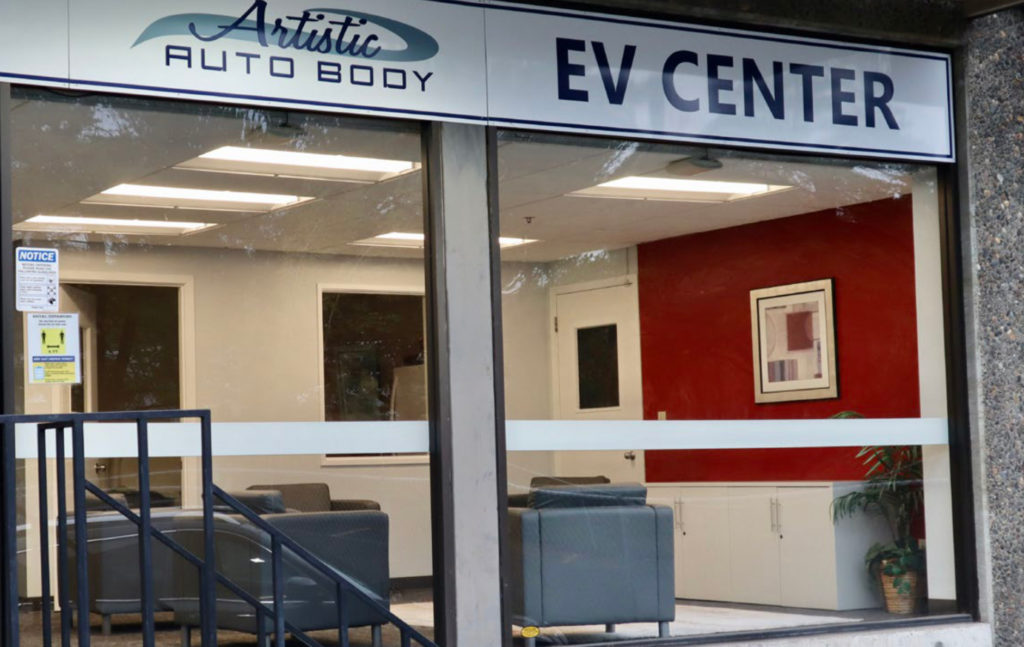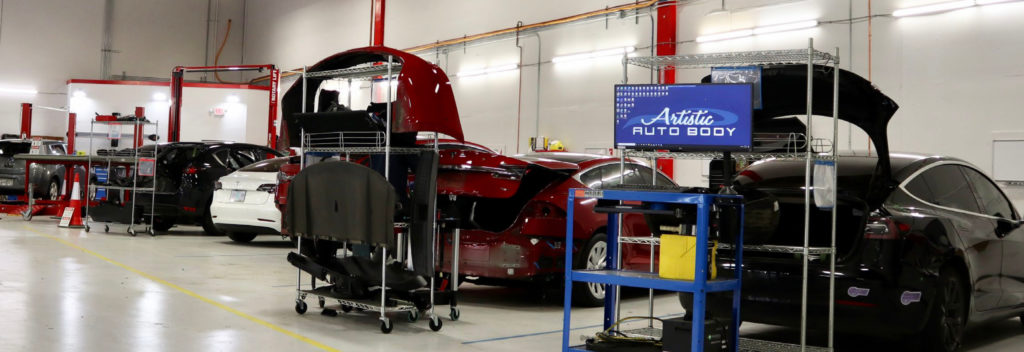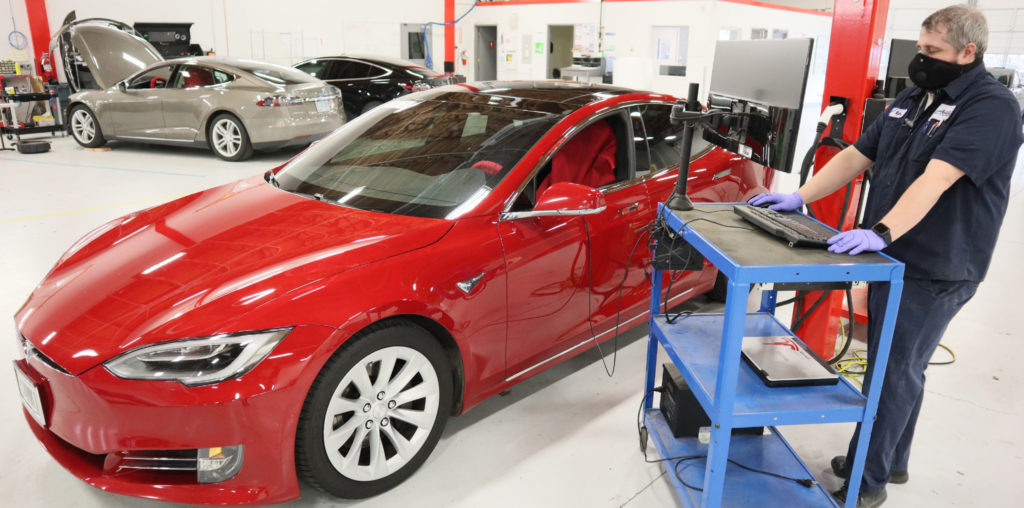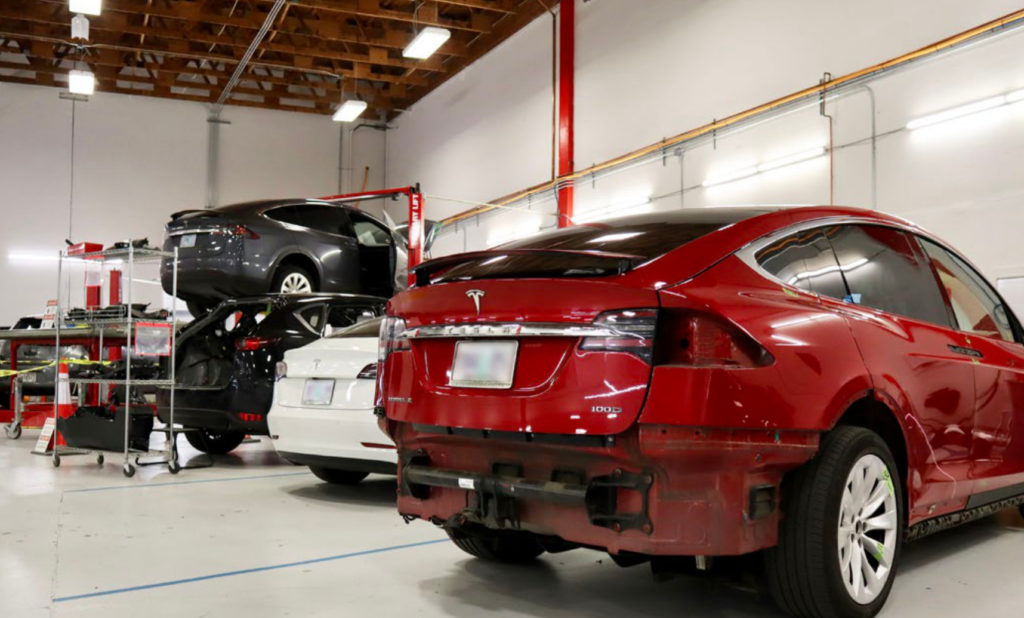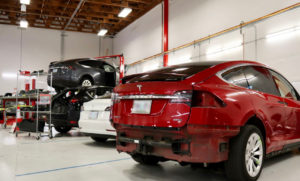
I-CAR/Artistic Auto Body guest column: Collision repair facility adaptations for EVs
By onAssociations | Business Practices | Education | Market Trends | Repair Operations | Technology
Editor’s note: Artistic Auto Body President Terry Mostul and I-CAR recently collaborated on an I-CAR Collision Reporter article examining life in a body shop focused on electric vehicles. The account by the 21,000-square-foot dedicated EV center operator is a fascinating look at factors collision repairers might not have considered — but might need to start thinking about soon as OEMs predict and pledge more electrification. I-CAR has graciously allowed us to reprint the piece here.
By Terry Mostul, Artistic Auto Body, and I-CAR
In Oregon we have both of the elements that can help drive EV adoption; high tech and sustainability. While we already had several OEM certifications that included electric models, I began to see an explosion of Teslas around town and decided to seek EV certification as well. In the beginning we tried to integrate the EVs into our regular flow which was a challenge. Trying to learn EVs while also processing everything else is hard because nobody gets the repetition they need to really learn all the unique steps related to EV repairs. But that segment of our business started to take off and that brought a new set of challenges that ultimately motivated us to dedicate a separate building and staff just to EV repair. I recognize that not everyone will be able to do what we did, but I believe the lessons we have learned can be helpful to everyone regardless of your situation.
During the first year we found that the EV repair process was quite different because the vehicles are so different and the repair process takes longer. The learning curve is substantial, and you really need a fresh approach to dedicate staff to specialize in EVs to get them the repetition they need to achieve proficiency. We also found there were some space and storage issues. This ranged from not having the space needed for semi-trucks to navigate on site to unload parts deliveries, to lacking space for storing all the interior parts that must be removed on virtually every job. We were storing these parts every safe place we could find including the lunchroom!
Since some parts can take weeks to arrive, we had to store EVs outside in the cold and rain, and EVs don’t like the cold because the automatic battery heater drains the battery to protect itself. And to achieve 100% disassembly you have to remove the door glass to remove the door handle so you have to cover them in plastic.
Finally, training has always been very important to us, and we saw an increasing amount of OEM and I-CAR EV training opportunities available for staff. About the time more people were becoming interested in these repairs, we noticed a steady stream of manufacturers announcing moves toward electrification with some even stating goals for their entire fleet to be electrified within just a few years.
Collectively, all of these issues and considerations along with steady growth led to our decision to create a dedicated EV repair center. Simply put, a dedicated EV center would help us outperform the market, differentiating ourselves as EV specialists. This is easier said than done, as EVs are very different and require a lot of special training, equipment, and attention to do repairs well. Today, this focus has helped us handle more volume at faster cycle times than the average shop.
Here are some other important tips and considerations:
Tooling and equipment
Beyond a dedicated space with charging stations and trained staff, don’t overlook the need for all the specialized equipment that is required for EV certification including annual equipment additions and recertification fees. For our team, this included heavy-duty laptops because standard laptops kept breaking at the connection ports. We also have mobile workstations for both the blueprinters in the Damage Analysis (DA) area and the technicians because almost every step requires close access to online resources.
While each certification has its own set of requirements, much of the high voltage safety equipment is common to them all.
Annual training and dedicated resources
It’s critical to maintain training year-round and extend that training to include detailers and office staff. Also be aware of any specialty training required for new model releases. We structure our process to include a dedicated diagnostic specialist to handle all the EV scans and calibrations, with a body tech also trained as his back up. Over the years we have trained several younger guys that were really good with computers and had an interest in research. They are easy to spot because each morning they come to work and want to share what they learned last night reading about new technology!
Extreme accuracy
Since replacement parts can take longer to arrive, it is imperative to strive for extreme accuracy in Damage Analysis. This requires a team effort to make sure nothing
is missed. In cases where there could be hidden damage, we’ll arrange for a special one day “Discovery Appointment” to reduce cycle time and rental expense on drivable cars. This is where we take it apart just enough to expose all the hidden damage, and then put it all back together, restore all the computer functions, and let the customer drive their own car until we have 100% of the parts needed for the repair. This can save in rental expenses. Most insurers are open to the idea and customers love it because they hate rental cars and gas stations!
Customer education
Consumer education of the unique repair process helps manage expectations, and thus overall satisfaction, so we dedicate a portion of our front office staff to communicate special information to EV customers and aim to be as thorough as possible with initial estimates. And just as we had to educate ourselves, we are often needing to educate customers and especially insurance adjusters about all the unique aspects of EV repair.
Room to operate efficiently
Due to longer processing times in Damage Analysis (DA), we created five dedicated DA stalls with charging stations and a couple lifts to efficiently assess damage on five cars at a time. We also created space for the safe storage of the large pile of interior parts on almost every job, in an “out-of-the-way” dedicated area. Since many parts deliveries are received via semi-trucks, our EV Repair Center is actually housed within a warehouse and distribution facility, offering dock-high doors and a large lot for easy truck navigation. And we have room for inside storage to keep EVs warm and dry in the wet, cold winter months. There are ample 240v charging stations throughout the facility.
IT infrastructure
Connected cars, workflows and customer communication are all vital, which is why we need three separate dedicated wireless networks. One for our employees, one for guests, and a separate network to link to connected vehicles due to special security requirements. We also have a geo-fence program set up which can automatically notify OEMs that their EV is on our premises, and in some cases also automatically places the car into service mode so the customer does not get warnings from their car when it gets disassembled.
Patience above all
I cannot overstate the importance of appreciating the extra time involved with repairing EVs. This includes researching all the OEM guidelines on every repair up front in DA and identifying all the system and ADAS calibrations, and EVs generally have more calibrations than normal cars. Each OEM repair method is attached to the file and reviewed with the tech for step-by-step vehicle repair. Once done, the tech signs to affirm he followed all the OEM guidelines and that is attached to each file for permanent record keeping.
The estimates have more lines and there can be hundreds of parts per repair, as there are a lot more one-time-use parts involved. So the entire parts process requires a little more effort as well.
It takes time and discipline to make sure the batteries stay charged during the repair process and have a full charge at delivery.
Keep in mind, too, that processing total loss vehicles requires a lot more work before releasing the car. This includes draining the HV battery and completing other specific steps required by each manufacturer. And these heavy hits must be put in quarantine outside on arrival until we can determine there is no damage to the battery itself. Then if not a total, it often has to be retowed into the facility.
One more area that takes time is in problem solving connectivity issues. It happens frequently, so you need an expert to assist in solving those problems quickly because if you can’t connect to the car the repair process often stops dead in its tracks.
Going the extra mile
Again, through lots of trial and error, we have identified several ways you can provide those little extras that can make a big difference:
- Maintaining some inventory of frequently needed EV stock parts to help expedite repairs.
- Resolving any customer complaints about factory issues at no charge. Instead of saying it is a “factory gap” issue we try to make it better to help build brand loyalty.
- Strive to be completely self-sufficient to improve cycle time. With proper training and equipment, it is possible to complete all of the repair related service operations in-house to avoid having to get recalibrations done at the dealership or service center.
- Having two battery tables eliminates delays when two HV battery R&I jobs occur simultaneously.
- Triple-check everything prior to delivery because some customers may travel a long distance for the repair, and you want to ensure they don’t have any issues afterwards. We take pride in our CSI and receive many referrals as a result of it.
EVs — what’s next?
The wave of electrification is coming and sooner than most people think. But along with that also comes self-driving vehicles, then connected vehicles, and ultimately transportation as a service. All of this brings substantial change for the entire automotive sector, and as with anything else, there will be winners and losers. Those who are most willing and able to adapt will see tremendous opportunity in the years ahead. But those who resist the change and wait to see what happens might suddenly find themselves wondering what just happened. We’ll continue to move forward and define the next generation of services for our industry and community, and I encourage all of us to work together in this transformative time, sharing our knowledge to strengthen our profession on behalf of the customer.
Terry Mostul is the owner of Artistic Auto Body. The Inter-Industry Conference on Auto Collision Repair is the primary collision repair industry training organization.
More information:
“Lessons learned: Creating a dedicated EV collision repair center”
Terry Mostul, Artistic Auto Body/I-CAR, I-CAR Collision Reporter, 2021
I-CAR OEM repair procedure website portal
Featured images: Artistic Auto Body’s dedicated electric vehicle center is shown. (Provided by Terry Mostul/Artistic Auto Body)

